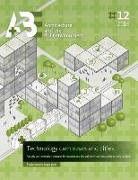- Start
- Technology Campuses and Cities: A Study on the Relation Between Innovation and the Built Environment at the Urban Area Level
Technology Campuses and Cities: A Study on the Relation Between Innovation and the Built Environment at the Urban Area Level
Angebote / Angebote:
This thesis examines the development of technology campuses as built environments and their role in stimulating innovation. Technology campuses entail a variety of built environments developed to accommodate technology-driven research activities of multiple organisations. The science park is the most common type of technology campus. Other types include the campuses of universities of technology and corporate R&D, parks. Governments, universities and R&D, companies are investing billions of euros in developing the infrastructure that will not only support their core processes, but will help them to remain competitive by attracting and retaining the best talent. Part of these investments are targeted to develop new buildings or entire areas that often result in campuses as we know them: a concentration of buildings accommodating organisations, people, and their activities in a (green) field. The assumption that the concentration of research activities in one location stimulates innovation is promoting the development of technology campuses in many places. However, the capacity of these built environments to support the different processes associated with innovation is not well understood - i.e. Technology campuses are urban areas in the inner city and peripheral locations that have the capacity to support the processes of knowledge creation and diffusion, as well as of attracting and retaining knowledge workers. The existent knowledge about the relationship between the built environment and innovation at the area level is limited. This knowledge gap may lead to inefficient use of the resources employed to develop technology campuses including capital, land, and time. Also, this lack of understanding can have the opposite effect, because technology campuses could easily become problematic areas dealing with vacancy, poor spatial quality, and connectivity issues frustrating the societal goal of a racting and retaining talent in the knowledge economy. A potential way to address these problems is outlining the ways in which the built environment stimulates innovation in technology campuses. In this context, this research addresses as main question 'How does the built environment stimulate innovation in technology campuses?' This research is grounded in the field of corporate real estate management and its theoretical assumption that the built environment is a resource managed to support the goals of organisations. Research in this field has focused on the practice of real estate management from the end user's view. Campus development is a comprehensive form of this practice, because it deals with activities that vary from developing real estate strategies, developing building projects, up to maintaining and managing the portfolio of an organisation. This research provides an understanding of the relationship between the built environment and innovation at the area level. This research developed knowledge clarifying such relationship in the form of a conceptual model and recommendations for practitioners involved in the practice of campus development.
Folgt in ca. 15 Arbeitstagen




